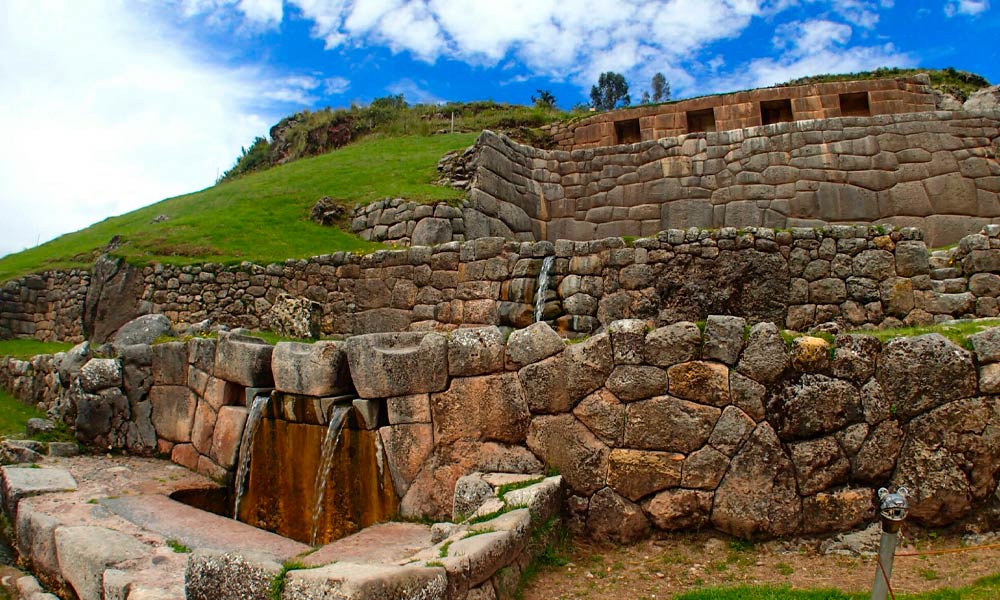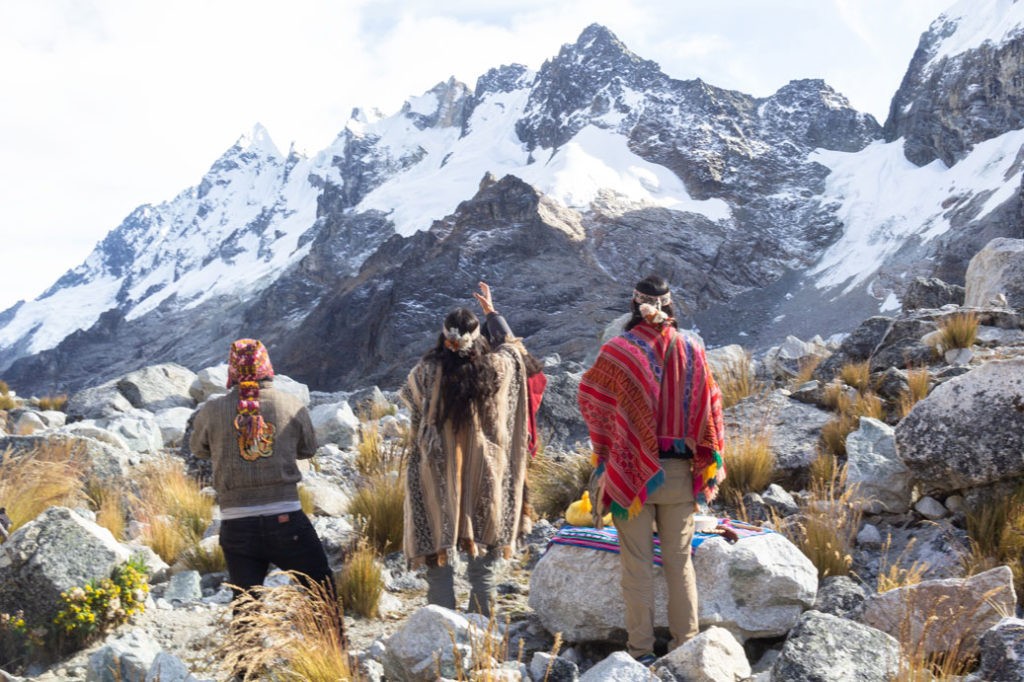The Incas ancient ceremonies civilization left an indelible legacy in history and the collective imagination. Their sophisticated culture, marked by deep spirituality, manifested through ancestral ceremonies and rituals that connected the Incas with the divine world and the surrounding nature. Before the arrival of the Spanish, these ceremonies were an integral part of Inca daily life and played a crucial role in their society. Let’s explore some of the most remarkable ceremonies that the Incas performed during that time.
Inti Raymi:
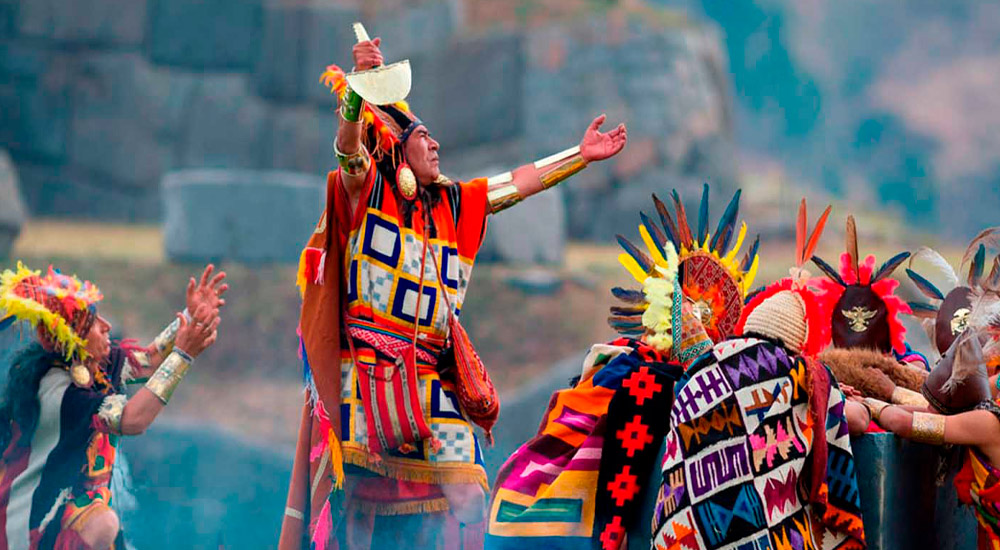
The Inti Raymi, often considered the most spectacular of all Inca ceremonies, was a momentous event that brought together the entire Inca Empire. Held on June 24th, the winter solstice in the Southern Hemisphere, this festival marked the shortest day and the longest night of the year. It was a time when the Inca civilization, with its intricate understanding of astronomy and agricultural cycles, celebrated the renewal of life and the forthcoming agricultural season.
Rituals and Ceremonies: The Inti Raymi began at the Coricancha, the Inca’s most sacred temple in Cusco. The high priest, adorned in elaborate ceremonial attire, would offer prayers and sacrifices to the Sun God, Inti. These rituals symbolized the gratitude of the Inca people for the Sun’s life-giving energy, which nourished their crops and sustained all life.
The Grand Procession: Following the ceremonies at the Coricancha, a grand procession made its way to the hillside fortress of Sacsayhuamán. The Inca ruler, often accompanied by nobles and high-ranking officials, would lead the procession. The ruler, impersonating Inti, was carried on a golden litter, and his presence was a symbol of the divine link between the Inca and the Sun God.
The Ceremonial Fire: At Sacsayhuamán, a ceremonial fire known as the “Willka Kuti” (Quechua for “return of the sun”) was ignited. This fire was considered sacred and was used to light other fires throughout the empire, symbolizing the spread of the Sun God’s blessings.
Sacrifices and Offerings: Animal sacrifices, typically llamas, were an integral part of the Inti Raymi. These offerings were made to ensure the Sun God’s favor and a fruitful harvest. The animals were sacrificed by priests, and their entrails were examined for omens and prophecies.
Dances and Music: The Inti Raymi was a vibrant celebration filled with traditional dances and music. These performances depicted various aspects of Inca life and spirituality, and they added a colorful and lively dimension to the festival.
Legacy and Revival: With the arrival of the Spanish conquistadors and the suppression of indigenous rituals, the Inti Raymi was banned. However, in recent decades, there has been a remarkable revival of this ancient festival. Today, the Inti Raymi is celebrated in Cusco and attracts visitors from around the world. It offers a glimpse into the rich spiritual and cultural heritage of the Inca civilization, showcasing their deep connection with nature and the cosmos. The revival of Inti Raymi serves as a testament to the enduring legacy of the Inca Empire and its profound reverence for the Sun God, Inti.
Capacocha:
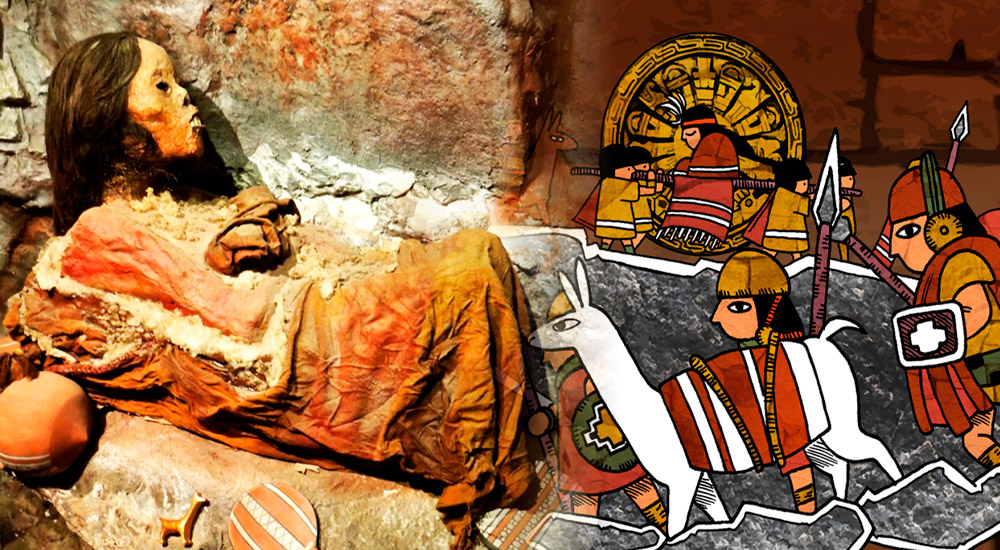
The Royal Sacrifice Capacocha was a ceremony of human sacrifice performed on special occasions. Typically, children from different regions of the empire were selected for sacrifice. These children were treated as divine beings and prepared months in advance for the sacrifice. It was believed that their sacrifice would ensure the well-being and protection of the empire, establishing a connection between the gods and the Incas.
The Sacred and Solemn Occasion: The Royal Sacrifice Capacocha was one of the most solemn and significant ceremonies within the Inca Empire’s religious and spiritual practices. This ritual involved the sacrifice of carefully selected children who were considered divine messengers, destined to bridge the gap between the mortal world and the divine realm.
The Selection Process: The process of selecting the children for sacrifice was meticulously carried out. Children from different regions of the vast Inca Empire were chosen based on specific criteria, including their physical features, purity, and health. These children were often of both genders, symbolizing the duality present in Inca cosmology.
Preparation and Honoring: Once selected, the chosen children were treated with the utmost reverence and care. They were believed to embody purity and innocence, characteristics highly esteemed by the Inca people. In the months leading up to the ceremony, these children received special diets and were clothed in the finest garments. They were regarded as sacred beings, and their presence was seen as an honor to their families.
Purpose and Belief: The Royal Sacrifice Capacocha was performed with a profound purpose. It was believed that through the sacrifice of these children, a direct connection with the gods could be established. The well-being, protection, and prosperity of the Inca Empire were thought to be guaranteed through this act of supreme devotion. It was a way to ensure that the gods would continue to bless the empire with abundant harvests, protection from enemies, and overall harmony.
The Ritual Act: The actual sacrifice involved high priests conducting ceremonies at sacred locations, often on high mountaintops or remote temples. The children, adorned in ceremonial attire, would be placed in specially prepared tombs or offered as symbolic sacrifices to the gods. Sometimes, they were given a ceremonial drink believed to ease their transition into the afterlife.
A Profound Legacy: The Royal Sacrifice Capacocha stands as a testament to the deep spiritual and religious convictions of the Inca civilization. It reflects their willingness to make great sacrifices for the welfare of their empire and their unshakable belief in the connection between the human world and the divine realm. While the practice of such sacrifices is no longer observed, the legacy of Capacocha remains a significant part of Inca history and spirituality, offering insights into their profound devotion and their understanding of the delicate balance between the earthly and the divine.
Chasquis:

The Backbone of Inca Communication: The Chasquis were the unsung heroes of the Inca Empire, serving as the vital communication network that allowed the empire to function effectively despite its vast size and rugged terrain. They were responsible for delivering critical messages, news, and even sacred objects across the extensive Inca road network, ensuring that the empire’s administrative machinery ran smoothly.
Swift and Efficient Messengers: The Chasquis were known for their remarkable speed and endurance. They were highly trained athletes who could cover long distances at an astonishing pace. The relay system they used allowed messages to be transported quickly. At various points along the extensive road network, relay stations known as “tambos” were strategically placed. At these tambos, a fresh Chasqui would take over, ensuring that messages could travel hundreds of miles in a matter of days.
Sacred Messengers: Beyond their practical role, Chasquis held a significant spiritual and symbolic significance within Inca society. They were considered sacred figures, entrusted with not only the physical transportation of messages but also the spiritual responsibility of invoking divine protection and blessings upon their journeys. Special rituals and ceremonies were conducted to bless the Chasquis and seek the favor of the gods for their safe passage.
The Inca Road Network: The Inca road system, or “Qhapaq Ñan,” was a marvel of engineering that connected the entire empire, stretching across thousands of miles. It encompassed a variety of terrains, from the high Andes to dense jungles. Chasquis were instrumental in maintaining the flow of information across this complex network, ensuring that the emperor, regional rulers, and other officials remained connected and informed.
A Legacy of Efficiency: The Chasquis’ efficient communication system was a testament to the Inca Empire’s advanced organization and administration. It allowed for quick decision-making, the rapid deployment of troops in times of need, and the efficient collection of taxes and tribute from various regions.
Respecting the Chasquis: The Inca people held the Chasquis in high regard, recognizing the sacrifices they made to fulfill their duties. Inca society had deep respect for those who served as messengers, as they played a pivotal role in the empire’s stability and growth.
Enduring Legacy: While the Inca Empire eventually fell to the Spanish conquest, the legacy of the Chasquis endures. Their remarkable feats of athleticism and their role as essential figures in Inca society continue to captivate the imagination and serve as a testament to the incredible achievements of this ancient civilization.
Mama Quilla:
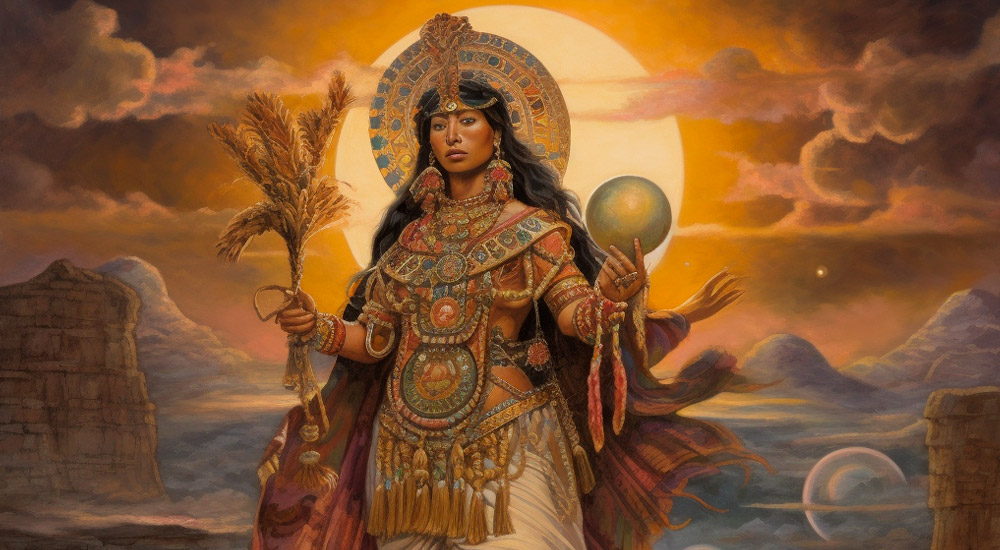
The Divine Moon Goddess: Mama Quilla, often referred to as “Mother Moon,” held a special place in the Inca pantheon of deities. She was considered the goddess of the moon and had a profound influence on various aspects of Inca life, particularly in matters related to agriculture, fertility, and timekeeping.
Lunar Cycles and Agriculture: Mama Quilla was believed to govern the lunar cycles, and the Incas closely observed these cycles to plan their agricultural activities. The lunar calendar played a vital role in determining the most auspicious times for planting and harvesting crops. The Inca farmers relied on the Moon Goddess’s guidance to ensure bountiful harvests and the well-being of their communities.
Rituals and Ceremonies: To honor and seek the protection of Mama Quilla, the Incas conducted elaborate ceremonies and rituals. These ceremonies were typically held during significant lunar events, such as full moons or eclipses, when the moon’s influence was believed to be at its peak. Offerings made during these rituals included various foods, beverages, and intricately woven textiles.
Woven Offerings: Textiles held immense cultural and spiritual significance in Inca society, and they played a central role in rituals dedicated to Mama Quilla. Skilled Inca weavers created beautifully intricate textiles as offerings to the Moon Goddess. These textiles were often adorned with symbolic designs and patterns that represented the lunar cycles, the night sky, and the moon itself. By presenting these finely crafted textiles, the Inca people demonstrated their reverence for Mama Quilla and their connection to the cosmos.
Fertility and Protection: Beyond her role in agriculture, Mama Quilla was also associated with fertility and protection. It was believed that her benevolent gaze ensured the well-being of families and communities. Couples seeking fertility often turned to the Moon Goddess for blessings and assistance in conceiving children.
The Cosmic Connection: In the Inca worldview, the moon was seen as a celestial body intimately connected to the earth and its cycles. Mama Quilla’s influence was not limited to the physical world; she was also considered a cosmic deity, playing a role in the broader balance of the universe.
Legacy of Reverence: Although the Inca Empire eventually succumbed to Spanish conquest, the reverence for Mama Quilla and the Moon Goddess continues to be a part of Andean and indigenous cultures in the region. The rituals and traditions associated with Mama Quilla are a testament to the profound connection between ancient civilizations and the celestial forces that shaped their lives.
Pachamama:
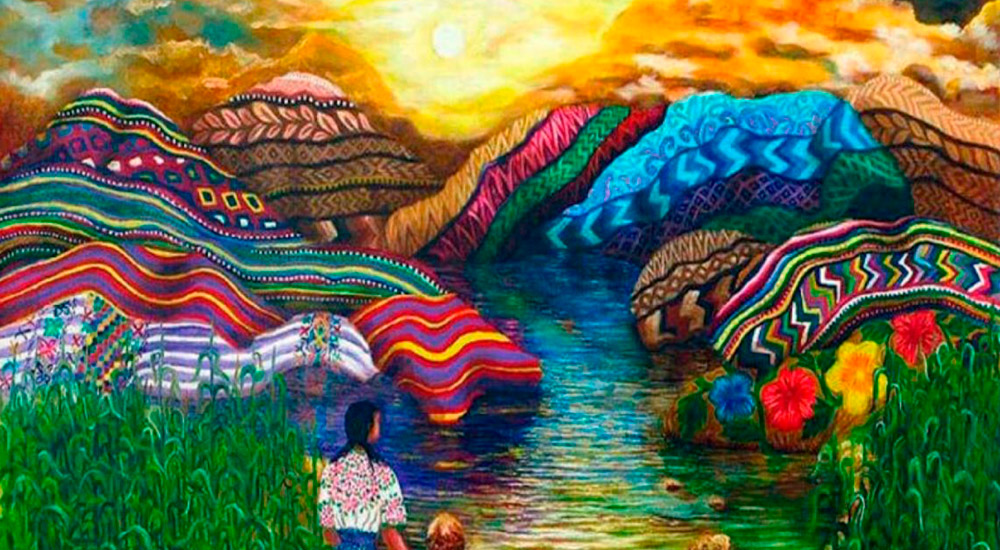
The Nurturing Mother Earth: Pachamama, often referred to simply as “Mother Earth,” occupied a central place in Inca cosmology and spirituality. She was viewed as the life-giving force that sustained all existence, providing fertility to the land and nourishment to its people.
Harmony with Nature: The Inca civilization had a deep reverence for the natural world, and their connection with Pachamama was a reflection of this reverence. They recognized that their survival and well-being were intricately tied to the health and balance of the Earth. As stewards of the land, the Incas believed it was their responsibility to maintain harmony with nature.
Ceremonies of Gratitude: To honor Pachamama and express their gratitude for her blessings, the Incas conducted ceremonies and rituals throughout the year. These ceremonies were often tied to agricultural activities and the changing seasons, as the Incas closely observed nature’s cycles.
Offerings to Mother Earth: Central to these rituals were offerings made to Pachamama. These offerings typically included symbolic items such as corn (maize), coca leaves, and other agricultural products. Corn, in particular, held great significance as a staple crop and symbolized the cycle of life, growth, and sustenance.
Permission and Blessings: In these ceremonies, the Incas sought permission from Pachamama to till the soil, plant their crops, and harvest the fruits of the land. It was believed that by making these offerings and seeking her blessings, they would ensure a bountiful harvest and the continued fertility of the earth.
Connection with the Cosmos: The Incas perceived Pachamama as an entity deeply connected to the cosmos. Her presence was not limited to the physical realm; she was seen as a cosmic deity who governed the cycles of life and death. This cosmic perspective reinforced the idea that all living beings were part of a larger, interconnected whole.
Legacy of Pachamama: Today, the reverence for Pachamama continues to be a vital aspect of Andean and indigenous cultures in the region. The rituals and offerings to Mother Earth persist as a way of maintaining a spiritual connection with the land and a reminder of the essential balance between humanity and nature. Pachamama remains a symbol of the enduring respect that the Inca civilization had for the Earth and its life-sustaining energies.
These ancestral ceremonies highlight the deep connection of the Incas with the natural elements and gods. Each ritual and ceremony had a specific purpose, whether to honor the gods, secure prosperity, or establish a spiritual connection. Although the arrival of the Spanish and colonization had a significant impact on Inca culture, these rituals and the spiritual essence surrounding them remain a fundamental part of Peruvian identity and continue to mesmerize the world with their richness and mystery.

